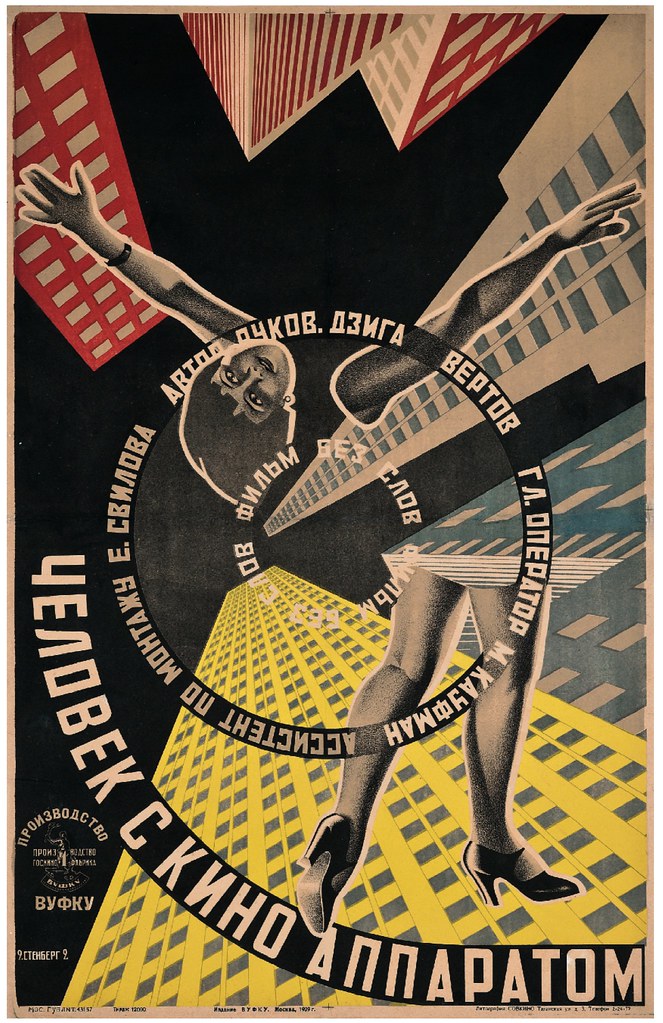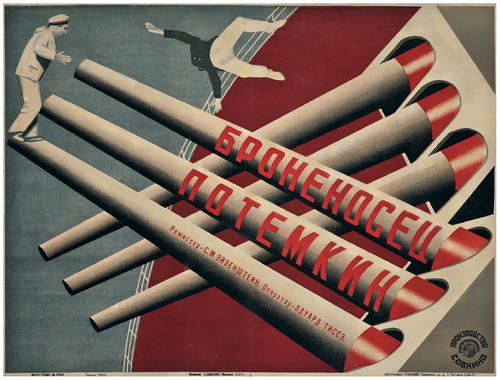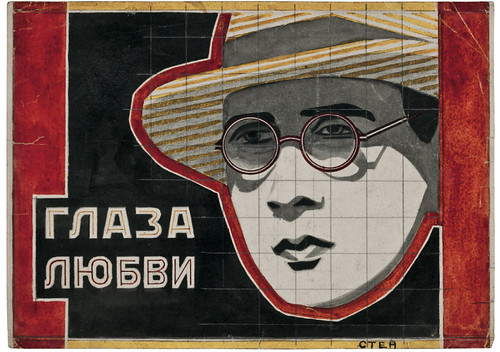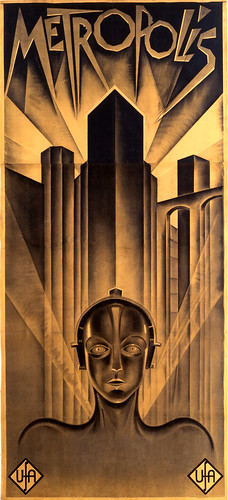Wednesday, 5:03am
31 October 2012
The men with a movie poster
Eighteen works by the Stenberg Brothers (Vladimir & Georgii), including five original designs for posters, go under the auctioneer’s hammer on 1 November 2012.

In the wake of the Christie’s sale of London Transport posters (see ‘The purpose of posters’), the 19th and 20th Century poster department at Christie’s South Kensington returns to normal with a sale of vintage posters at their Old Brompton Road saleroom tomorrow (1 November 2012), writes Graham Twemlow.
Among the varied lots of travel posters and late nineteenth-century French posters are some outstanding Russian film posters by the Stenberg Brothers. The most expensive of these (estimated at £60,000-80,000) are The Man with the Movie Camera and Battleship Potemkin, both designed in 1929.
Posters by the Stenberg Brothers. Right: Battleship Potemkin, 1929. Top: The Man with the Movie Camera, 1929.
The Stenberg Brothers, Georgii and Vladimir, collaborated on most of their work. Primarily known today for film posters, they were also noted for their sets and costumes for Moscow’s Kamerny Theatre and as teachers at the Moscow Institute for Architectural Construction.
They designed their first film poster, The Eyes of Love, in 1923 – a gouache and pencil preliminary design is included in the sale (est. £12,000-18,000). The brothers went on to design approximately 300 more before Georgii’s untimely death in a motorcycle accident in 1933.
The Eyes of Love poster was signed ‘Sten’, but thereafter their posters carried the joint signature as ‘2 STENBERG 2’.
Stenberg Brothers, The Eyes of Love, gouache & pencil maquette on paper, 1923.
Russian graphic design of the 1920s is notable for its experimentation with photomontage but the Stenberg’s work is, with a few exceptions, completely hand-drawn. The Man with the Movie Camera poster is a remarkable example of graphic design from the period. The skills and design sensibilities of the Stenberg brothers combine to create a carefully structured and kinetic entity.
Dziga Vertov, the influential Russian film-maker who made The Man with the Movie Camera, was noted for the experimental nature of his films, using devices such as split-screen techniques, montage, low-angle and bird’s-eye camera views. In this poster the Stenbergs echo Vertov’s multi-layered techniques. The modernist skyscrapers are placed at disconcertingly oblique angles that lead the viewer towards the fragmented body parts of the female character and into a vortex-like representation of the text. (Vladimir Stenberg’s daughter once said that the brothers never saw a real skyscraper, only the ones depicted in film.)
Heinz Schulz-Neudamm, Metropolis, poster, 1927.
£60,000-£80,000 may seem a steep price to pay, but that pales into insignificance next to what is reportedly the most expensive film poster of all time. A poster for Fritz Lang’s 1927 film Metropolis was sold in 2005 for $690,000 (£443,000). Earlier this year, as part of a bankruptcy settlement, it was offered for sale again for $850,000 (£546,000).
Vintage Posters, Christie’s, London, South Kensington, 1 November 2012.
Eye is the world’s most beautiful and collectable graphic design journal, published quarterly for professional designers, students and anyone interested in critical, informed writing about graphic design and visual culture. It is available from all good design bookshops and online at the Eye shop, where you can buy subscriptions, back issues and single copies of the latest issue.



